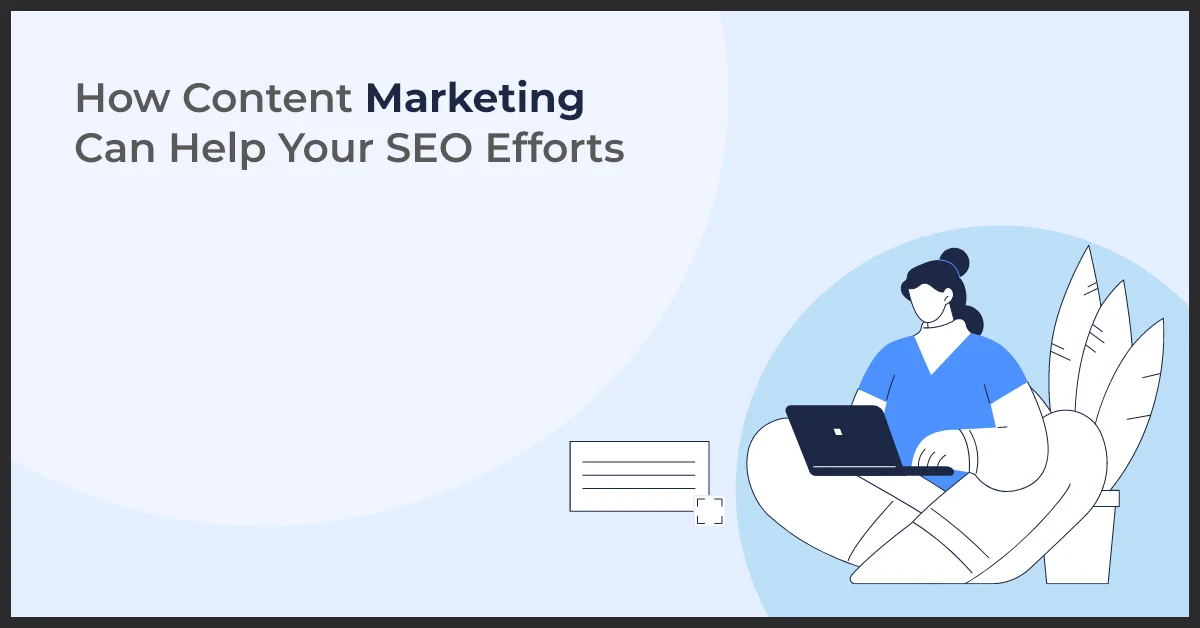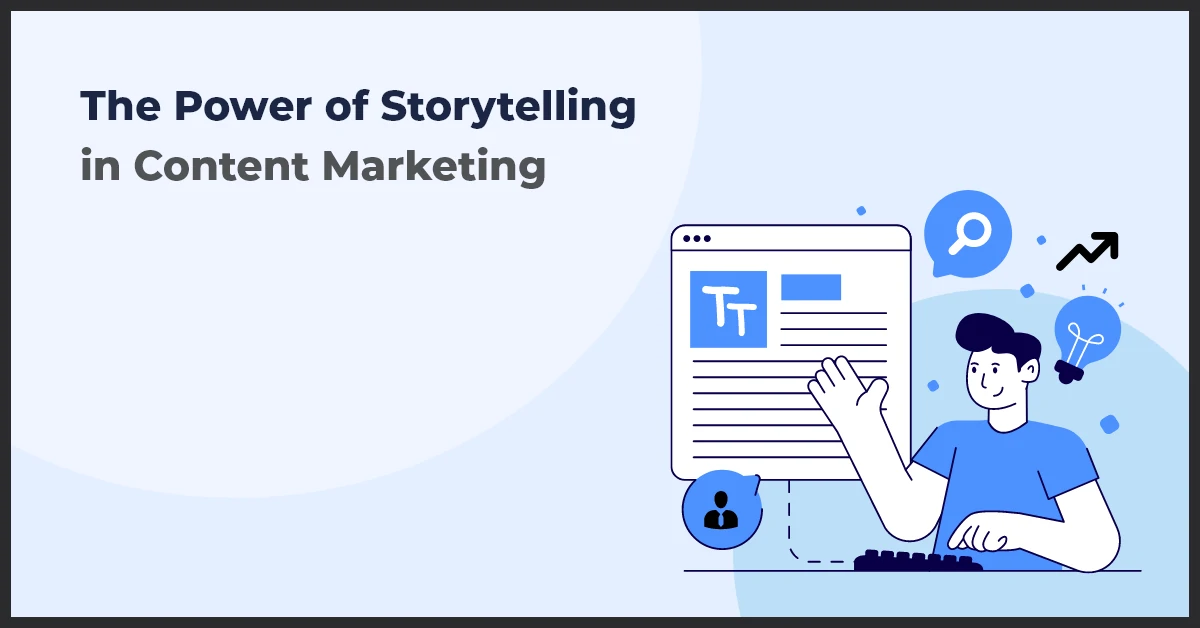Content Gap Analysis: Boost Visibility by Filling Missing Gaps

Published on: January 23, 2023
Updated on: April 15, 2025
2328 Views
- Content Marketing
10 min read
Calling all content creators! Are you tired of feeling like you're shooting content in the dark? Well, put down your content quiver, and let's talk about a little something called a content gap analysis.
Think of it like a game of "Content Tetris" - you want to fit the right content in the right place at the right time. But without a content gap analysis, it's like trying to play the game blindfolded. You might get lucky and place a few blocks correctly, but you'll inevitably end up with gaps in your content strategy.
So, where do you begin with this analysis? And what tools are available to assist you?
Keep reading this blog for answers to these questions and detailed information on conducting a content gap analysis.
What is a Content Gap Analysis?
Content gap analysis evaluates your existing content and identifies areas where it may be lacking compared to your competitors.
This process can help you understand what topics are in demand within your market and identify opportunities to create new content to attract potential customers and increase your search engine rankings. It is an essential process to be aware of and can be conducted regularly to ensure you are always ahead of the competition.
Two Aspects of Content Gap Analysis
1. Repurposing Existing Content
Repurposing existing content refers to adapting existing content for use in a new format or for a different audience. It can include updating outdated information, changing the format of the content (e.g., from blog post to video), or republishing content on different platforms (e.g., social media, email marketing).
The idea is to make the most out of the content you have already created by finding new ways to use it rather than creating entirely new content every time. It saves time and resources while still providing valuable information to your audience.
2. Identifying Missing Content Topics
This process involves comparing your content to that of your competitors to identify any topics or areas that they are covering that you are not. By identifying these missing topics, you can create new content to fill those gaps and ensure that your website has complete and comprehensive coverage of the topics relevant to your market and your audience. It can also help you to attract new visitors and improve your search engine rankings.
By examining competitors' content, you can discover the following:
- Missing content topics
- Opportunities to create a content calendar based on competitor gaps
- Keywords your competitors are targeting that your website is missing
By analyzing your current content can reveal the following:
- Outdated content
- Content lacking recent examples
- Content with fewer details
- Complex content
You can apply content gap analysis to various types of content, including:
- Website pages
- Landing pages
- Lead magnets (e-books, presentations, reports)
- Social media content
- Other content assets
Pro Tip: Repurpose content into new formats to extend the reach and save time. Analyze competitors to find missing topics, improve SEO, and attract new visitors for better market coverage.
Benefits of Content Gap Analysis
While we have already discussed some advantages of conducting a content gap analysis, let's dive deeper and explore how it can benefit your marketing needs.
1. Reveals New Content Opportunities
Creating content is a thrilling journey, full of twists and turns, but getting caught up in the day-to-day tasks is easy. It's ok to ask questions like "Is this content hitting the mark?", "How can we make it better?" and "How can we get more people to see it?"
While it's great to stay laser-focused, analyzing what your competitors are up to can open your eyes to new possibilities. It can help you discover new paths you might have never thought of.
By analyzing the competitive landscape, you can add the seasoning your content needs to stand out. Who knows, you may even discover a secret recipe for content success.
2. Unravels New Keywords
As a marketer, you are well aware that having a comprehensive and effective keyword strategy is vital to the success of your campaigns. However, keyword research can be a labor-intensive and sometimes overwhelming task.
But, by conducting a thorough content gap analysis, you can quickly identify your competitors' keywords and target them for your strategy. This will save you time and give valuable insight into your industry, allowing you to optimize your campaigns and outrank your competition.
3. Deliver the Right Content
After identifying any gaps in your content through a gap analysis, you can take steps to fill those gaps by creating new content or repurposing existing content to better meet the needs of your visitors. By doing this, you can ensure that your website is providing visitors with the content they are looking for and ensuring they have a positive experience.
Now that you know what a content gap analysis is and the advantages it can provide to your online marketing goals, let's dive into the process of conducting one.
3-Step Process to Conduct Content Gap Analysis
Step #1: Do a Detailed Keyword Research
Conduct a thorough analysis of the keywords related to your product or niche and categorize them based on buyer intent. For instance,
- Keywords associated with questions such as 'what,' 'how,' and 'where' should be classified as awareness intent.
- Phrases containing terms like 'vs.' and 'best' should be classified as consideration intent.
- Keywords with terms like 'buy,' 'get,' 'purchase,' and 'apply' should be classified as purchase intent.
Once done, organize the keywords into subtopics and topics to provide a clear and structured view of your research findings. To optimize the results of your keyword research, map your current ranks and URLs against the identified keywords.
Doing so will provide insight into the topics where your website is currently performing well and where it may need improvement. Use this information to create new content that aligns with the identified intent, and also focus on identifying keywords that are ranking on page 2 or 3, as they have the potential to be optimized for improved ranking.
Step #2: Conduct a Content Audit
Once you have listed all the keywords and mapped URLs that need to be optimized, look for primary relevant keywords for the web pages where you want to improve the content.
Now, search that keyword in Google search to scan the SERP results, look at all the websites on the first page, what content they are writing, and what kind of topics and heading they are covering.
Analyze the gaps within your content by comparing it with competitors.
As AI has grown smarter and penetrated every field, it has also enrolled its presence in marketing and content tools. With AI-based tools like Market Muse, you can easily compare your content score with the competitor's content score and get insights like average word count, content score, and targeted word count and content score.
All these data points make it easier to analyze content. Just look for the content scores for each page to identify the highest content gaps and fix them on priority.
Step #3: Do a Competitor Analysis
Alright, so the final step of the content gap analysis is to check out what your competitors are doing. Here's what you need to look at:
Competitor's content: Check out what your competitors are writing about and the topics they're covering. See which keywords they're ranking well for and you're not.
The Semrush keyword gap tool can come in handy here. It'll give you a list of the keywords you don't rank for, but your competitors do.
Competitor's funnel:
- Analyze the competitor's website and see how they guide visitors through their customer journey.
- Take note of the pages they direct visitors to, such as e-books, FAQs, case studies, etc.
- Compare this to your own website's funnel strategy. If there are cracks in your website's funnel strategy, it may be necessary to audit both your content and funnel strategy.
By understanding the process and purpose of competitor gap analysis, you can improve your SEO and fix any gaps in your content and user journey.
While we discussed a manual process for doing the gap analysis, there are also tools available that can make the job easier and save time. Some popular tools for content gap analysis are SEMRush, Ahrefs, and Market Muse.
Pro Tip: Start with keyword research to categorize intent, audit your content for optimization, and use tools like SEMrush to analyze competitors and find ranking opportunities to enhance your content strategy.
Content Gap Analysis: 3 Best Practices
1. Analyze SERP Results
To analyze Google's first page, search for your target keywords and take note of the top results. Look at the titles, headlines, and overall structure of the content.
Compare this to your content and identify gaps in information, format, or structure to understand what is already ranking well and how you can improve your content to better compete for those rankings.
Some of the common content gaps include:
- Content freshness: When was the content published or last updated?
- Depth: Does the content provide all the necessary information and details?
- Readability and usefulness: Is the content easy to read and understand?
- Wow factor: Is the content impressive and shareable?
Ideally, you would aim to fill these gaps with your content. But even improving on one or two gaps can give you a good chance of outranking your competition on Google's first page.
2. Use Tools
Tools like SEMRush can help you scale up the process of identifying content gaps. SEMRush has a feature that can quickly find topics with many content gaps by analyzing a competitor's top-performing keywords.
To use this feature, simply input a competitor's website into the tool and review their top-performing keywords. Then, check the first page of Google for each of those keywords.
You may come across some first-page results that are solid and have minimal gaps. However, you may also find first-page results that have many gaps. These are the opportunities where you can create content that is even better and more comprehensive.
3. Audit Your Content
Sometimes, the best place to find content gaps is right under your nose (or on your website, to be more specific). Give your content a good once-over with a content audit, and you might be surprised to find some underperformers.
But don't worry; once you find those gaps, you can fill them in and watch your content soar to new heights. It's like cleaning your closet and finding a hidden designer dress, except with words and SEO.
Key Takeaways
- Content gap analysis helps identify missing topics and opportunities to enhance your content strategy.
- Repurposing existing content can save time and resources while reaching new audiences.
- Analyzing competitors reveals new keywords and content ideas to boost your visibility.
- A thorough content audit uncovers outdated or underperforming content that needs attention.
- Utilizing tools like SEMRush and Market Muse can streamline the content gap analysis process.
- Regularly conducting content gap analyses keeps your website relevant and competitive in your niche.
Parting Thoughts
In conclusion, content gap analysis is a pretty important step when it comes to creating and improving the content on your website. It's like looking at your content and comparing it to your competitors. It helps you identify what's missing and what you can do to improve it.
Regular content gap analysis allows you to stay ahead of the competition and ensure that your website provides your audience with the most comprehensive and up-to-date information.
Overwhelmed or don't know where to start? Let Growth Natives help. Contact us today for a free consultation and take your website's performance to the next level.
Frequently Asked Questions
Content gap analysis improves SEO by identifying missing or underperforming content on a website. It allows businesses to create targeted content that addresses audience needs, improves rankings, and captures opportunities competitors may exploit.
Content gap analysis is important because it reveals areas where a website lacks relevant content, helping to optimize for user intent, enhance search visibility, increase traffic, and better align with evolving SEO trends and competitor strategies.
To identify content gaps, analyze competitor content, evaluate search queries your site isn’t ranking for, assess user intent, and review analytics data to find topics or keywords where your site lacks coverage or ranks poorly.
Tools like SEMrush, Ahrefs, Moz, and Google Search Console can be used for content gap analysis by providing keyword opportunities, competitor comparisons, and insights into what topics need better coverage.
Content gap analysis impacts keyword strategy by highlighting missed keyword opportunities, helping refine focus on long-tail keywords, improving content relevance, and guiding the creation of high-performing content around targeted valuable search terms.



